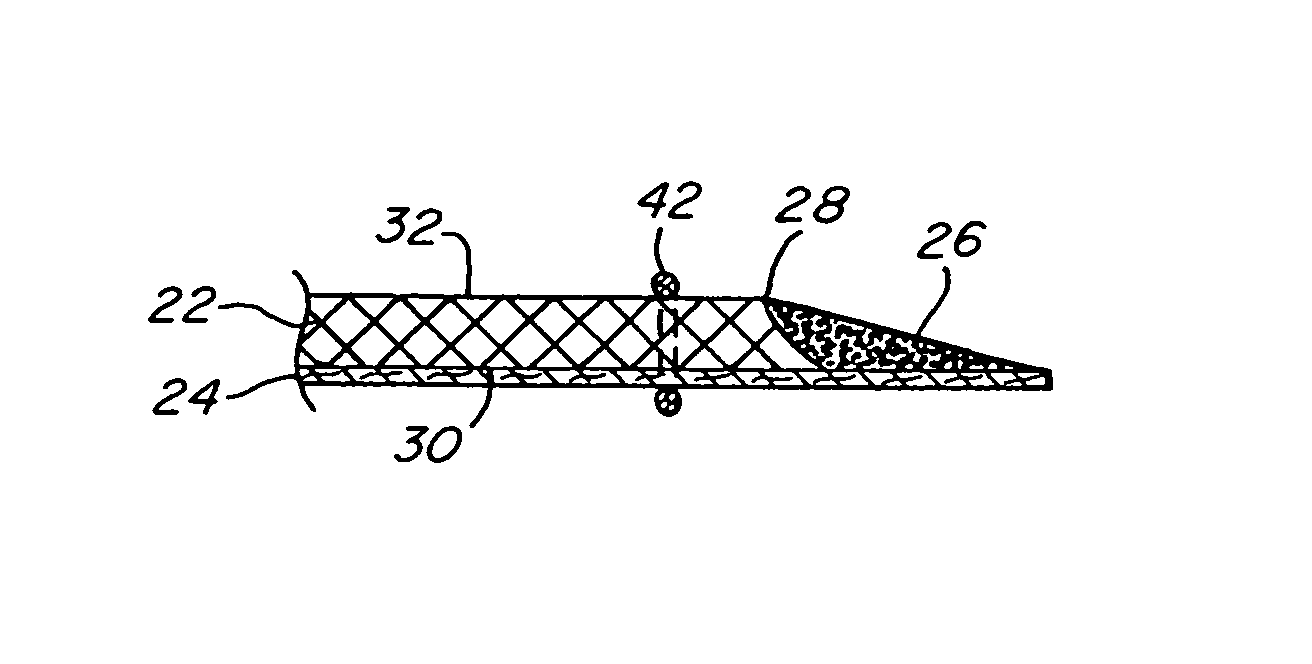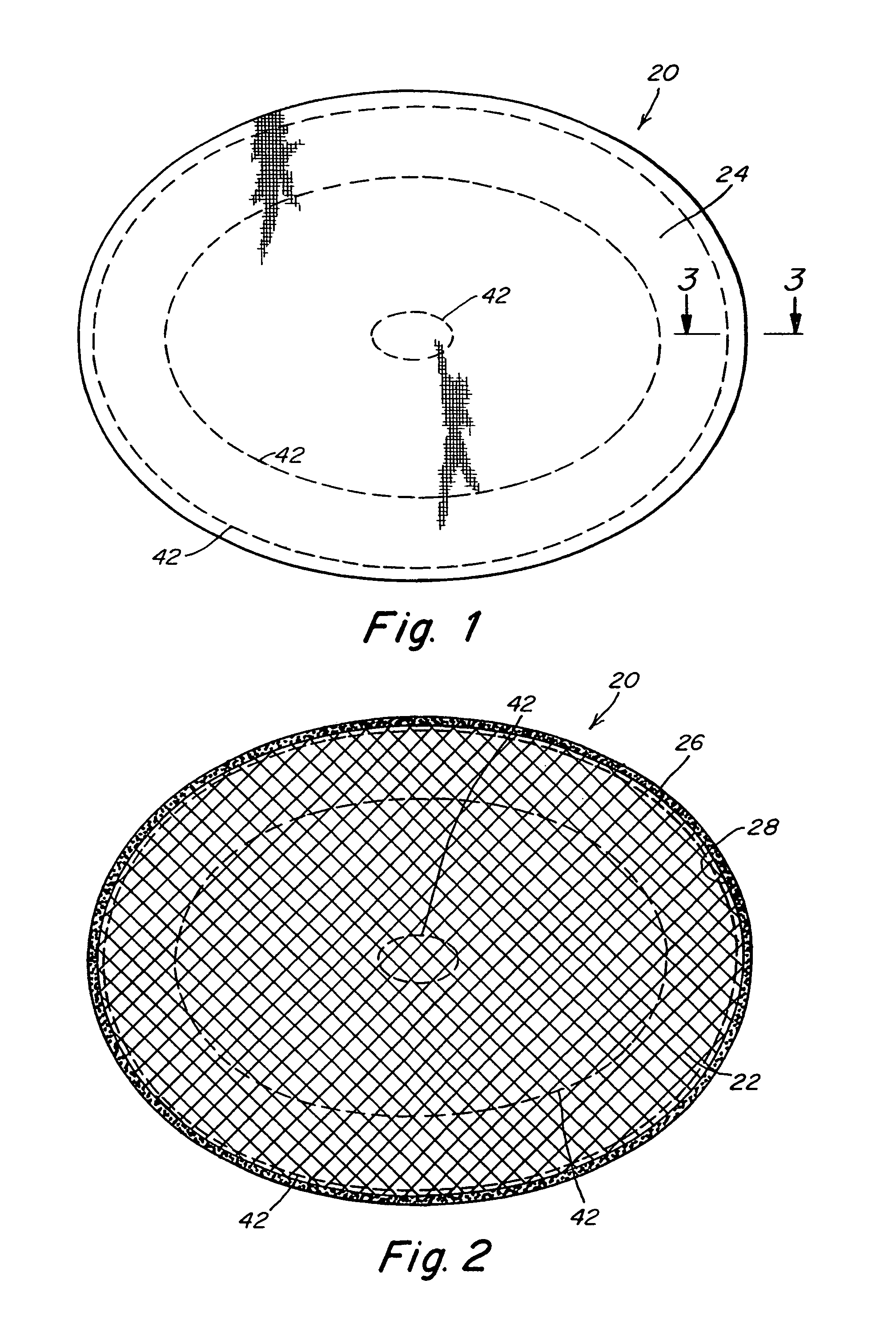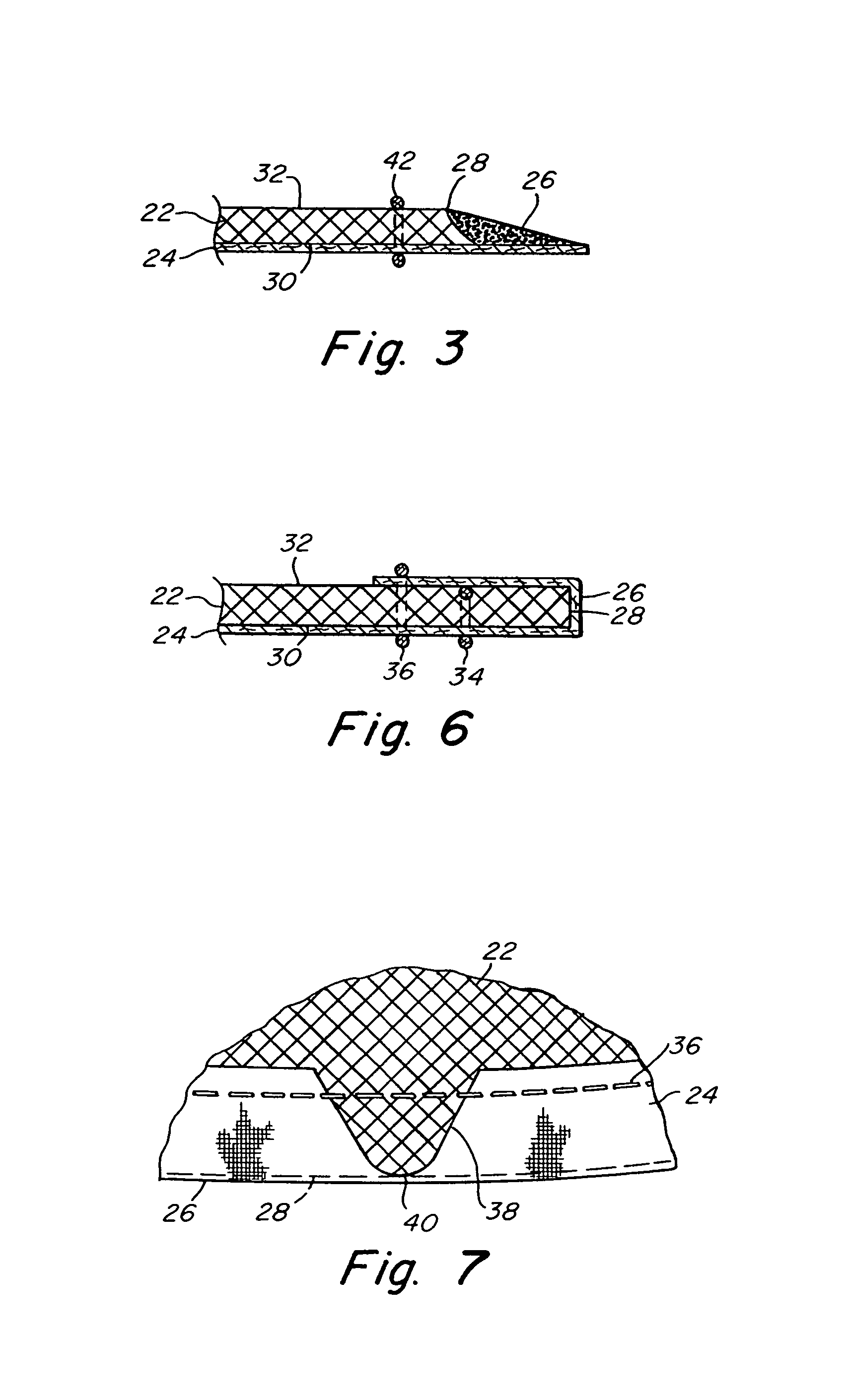Implantable prosthesis
- Summary
- Abstract
- Description
- Claims
- Application Information
AI Technical Summary
Benefits of technology
Problems solved by technology
Method used
Image
Examples
Embodiment Construction
[0027]FIGS. 1-3 illustrate one embodiment of an implantable prosthesis for repairing soft tissue and wall defects, such as ventral and inguinal hernias, and / or for chest wall reconstruction by promoting tissue ingrowth thereto while limiting the incidence of postoperative adhesions to selected portions of the prosthesis. The prosthesis 20 includes a layer of tissue infiltratable repair fabric 22, an adhesion resistant barrier layer 24 overlying at least a portion of one side of the fabric, and a peripheral barrier 26 extending about a portion of the outer peripheral edge 28 of the fabric.
[0028]The repair fabric 22 is formed of a biologically compatible, flexible material that includes a plurality of interstices or openings which allow sufficient tissue ingrowth to secure the prosthesis to host tissue after implantation. The barrier layer 24 and the peripheral barrier 26 are formed of a material and / or with a structure that does not substantially stimulate tissue ingrowth and adhesio...
PUM
 Login to View More
Login to View More Abstract
Description
Claims
Application Information
 Login to View More
Login to View More - R&D
- Intellectual Property
- Life Sciences
- Materials
- Tech Scout
- Unparalleled Data Quality
- Higher Quality Content
- 60% Fewer Hallucinations
Browse by: Latest US Patents, China's latest patents, Technical Efficacy Thesaurus, Application Domain, Technology Topic, Popular Technical Reports.
© 2025 PatSnap. All rights reserved.Legal|Privacy policy|Modern Slavery Act Transparency Statement|Sitemap|About US| Contact US: help@patsnap.com



